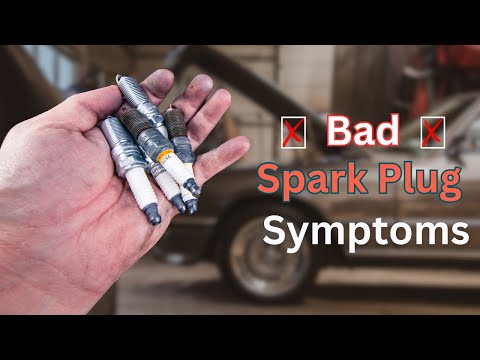
Sometimes symptoms of bad spark plugs can sneak up on you. Your car starts hard, maybe it sputters or idles a little harder than usual when you’re sitting at a stop light. The car’s still running, you pass it off as nothing. You tell yourself things like “Next time I fuel up I’ll buy the premium gas. That’ll do.”
Like any procrastinated problem, the symptoms of bad spark plugs will just keep getting worse and worse, until you’re forced to confront them head-on, or you’re left stranded on the side of the road. And the tricky thing is that these signs can also be caused by other common engine problems, making it difficult to pinpoint the exact cause.
So, how can you tell if you have bad spark plugs and not something else? To truly pin down the cause of the problem, we’re going to have to look at the top 10 symptoms of bad spark plugs and what your car is really trying to tell you.
10 Symptoms of a Bad Spark Plug You Should Never Ignore
Below are eight signs of faulty spark plugs that you should keep an eye out for:
1. Car Feels Rough at Idle

If you’re dealing with a bad spark plug, you’ll likely experience rough idling, which may include rattling noises, excessive vibrations, and sudden surges or drops in the internal combustion engine’s RPM. Spark plugs play a crucial role in maintaining the engine’s precisely choreographed internal combustion cycle by firing hundreds of times per minute.
However, when they go bad, this typically means they are struggling to fire efficiently, making it difficult for the fuel and air mixture to combust effectively, resulting in rough idling.
When a fouled spark plug essentially misses a beat the choreography of the dance becomes chaotic. This causes abnormal vibrations in the engine, which you feel as a rough idle. If it’s only one spark plug that’s bad, the rough idle is minimal and might be hard to notice.
If it’s a problem with multiple spark plugs the chaotic vibration becomes more violent. Usually, when one spark plug is fouled, others are soon to follow, which is why the rough idle of bad spark plugs get exponentially worse over time.
The problem here is that a rough idle can be due to bad spark plugs or a bad ignition coil. The only way to know for sure is to pull a suspect spark plug or two and test it with a spark tester. At the same time, you can test the ignition coil with a multimeter.
2. Problem when Starting

The same performance issues of a bad spark plug that causes a hard idle, also quickly lead to the engine having a hard time starting. This might be a delay of a few seconds at first before the engine finally turns over. You might also hear a clattering noise and the engine finally sputters to life.
It’s easy to confuse hard starting due to bad spark plugs as a battery or starter motor problem. Though they’re relatively easy to eliminate. You can get the battery tested for free at most auto parts stores. If it’s a starter motor problem, you’ll likely hear whirring noises instead of clattering and smoke coming out of the engine bay.
3. The Car Starts Stalling at Idle

Your car stalling surprisingly when you’re idling at a set of stop lights is the next logical symptom of bad spark plugs. This is a sign that the spark performance issues are getting worse. Usually meaning that additional bad spark plugs are adding themselves to the equation.
One stall at the lights might be mistaken for a clogged fuel filter or a failing fuel pump. When it starts happening frequently, with other symptoms the car is trying to tell you that you have multiple bad spark plugs. The additional worry here is that the car could stall, and leave you stranded.
4. The Car Feels Down on Power

When your car has a malfunctioning or bad spark plug, you might notice it driving sluggishly or losing responsiveness. Worn spark plugs could be responsible for your vehicle’s feeling down on power. When a spark plug becomes fouled or dirty, it struggles to create an effective spark, leading to a noticeable dip in performance. As your spark plugs deteriorate, your car might grapple with power at different stages, leaving you longing for the days of smooth, responsive driving.
Initially, you’ll notice this when you try to accelerate forcefully. For instance, when attempting to merge onto the highway at speed, your car might limp dangerously slow towards the fast-moving traffic. So, if your car has lost its get-up-and-go, it’s worth considering the possibility of bad spark plugs as the cause.
5. You may notice Engine Surging and Sputtering
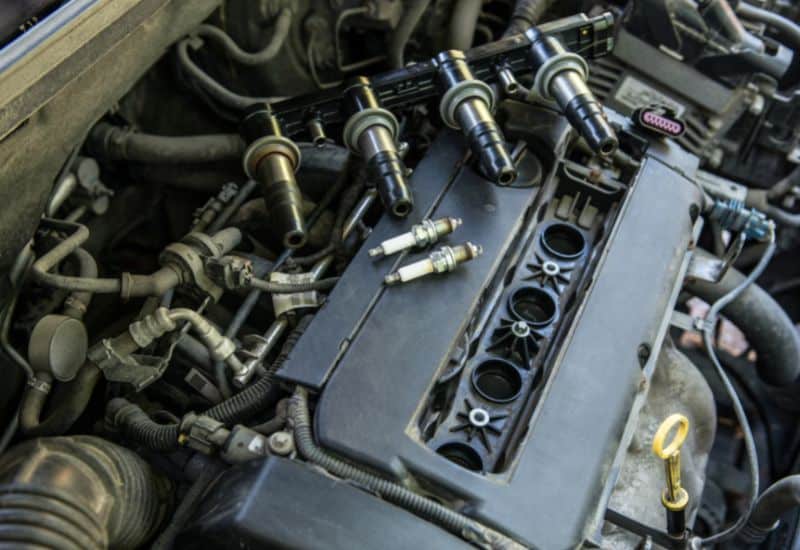
Inconsistent acceleration as the engine surges or starts sputtering is a sign that the bad spark plugs aren’t igniting the fuel/air mixture in the cylinders at the proper rate. This usually happens along with the engine feeling down on power.
The car might limp at first when you step down hard on the accelerator pedal. Then suddenly it surges with jerking acceleration, only to sputter and go back to limping again. Depending on when it happens it can also confuse the TCM causing the transmission to go into the wrong gear.
6. Significant drop of MPG
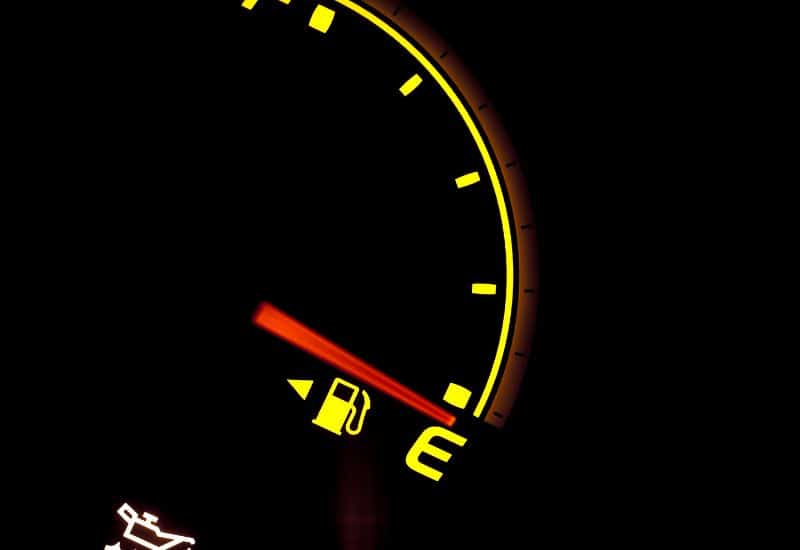
As the spark plug problem gets worse you’ll start to notice your fuel consumption taking a nose dive. At first, your MPG might be a little bit down. Especially if there are only one or two bad spark plugs. Then it will seem to fall off a cliff, as the poor performance issues in the cylinders allow unburned fuel to migrate into the exhaust system.
7. Fuel Vapor Odor in the Exhaust
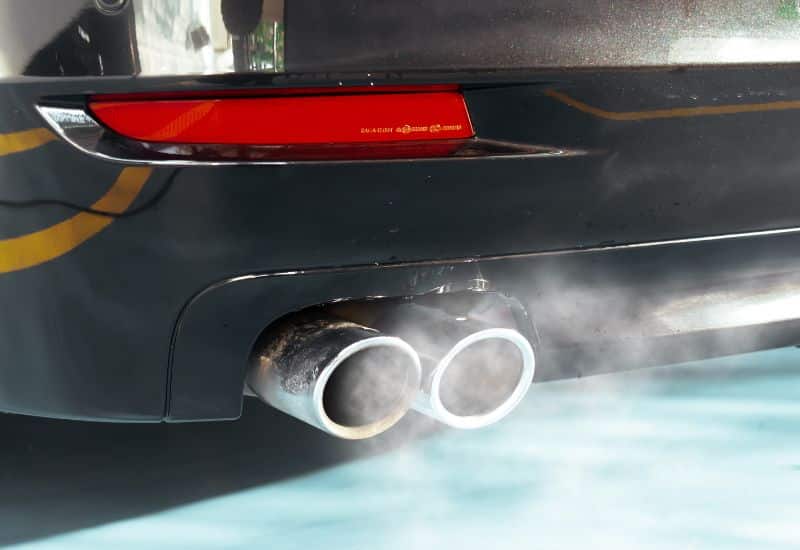
As bad spark plugs problems progress, you can start to smell fuel vapor odors in the exhaust. This usually happens in tandem with nose-diving fuel economy, as unburned fuel starts making it from the cylinders into the exhaust system.
8. The Engine Starts Misfiring

Engine misfiring is one of the most dangerous symptoms of bad spark plugs. This is the point where the performance issues in the cylinder are leaving unburned fuel behind. It then ignites of its own volition out of time with the engine’s intended internal combustion cycle.
This is the point where you absolutely have to stop driving the car. Not only can misfires from bad spark plugs damage the engine, but it can also cause expensive damage to the catalytic converter or other parts of the exhaust system.
9. Check Engine Light comes on
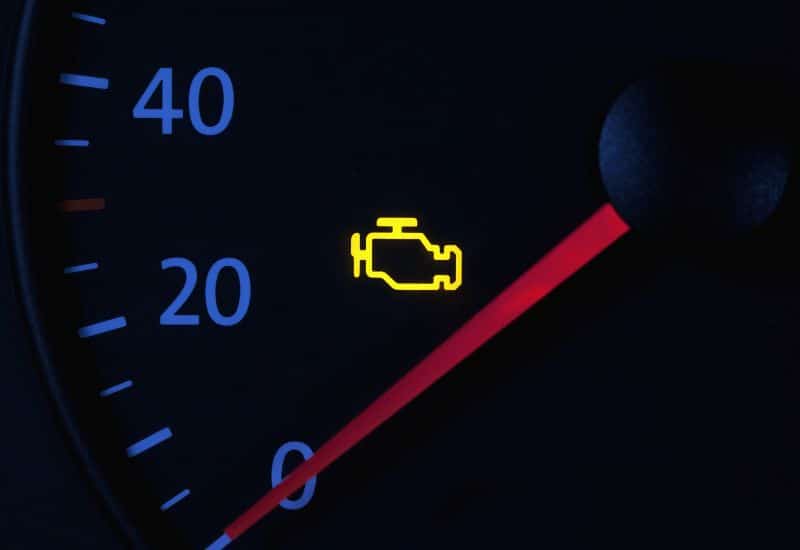
Once the engine starts misfiring or is frequently stalling due to bad spark plugs it will eventually cross the ECU’s threshold to trip the check engine light. A lot of times the check engine light will flash at the same time the engine starts misfiring or stalling. In most models, this is the car’s way of telling you to pull over immediately.
Even if the check engine lights flashed and doesn’t come back on again, doesn’t mean the problem is gone. Eventually, the bad spark plug problem will cause the check engine light to come on and stay on. This is usually a sign that you’re in for a serious repair bill.
10. Noticeable Residue on Spark Plugs
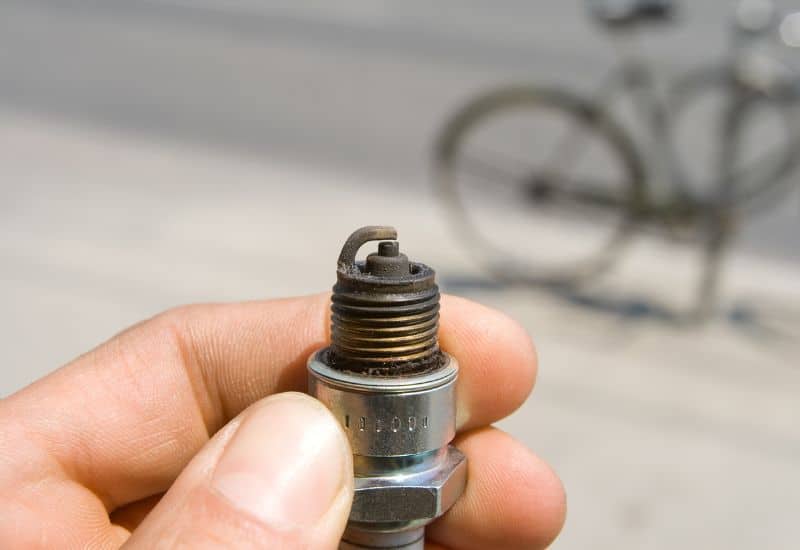
If you’ve been noticing signs of bad spark plugs, and you want to confirm your suspicion, the easy answer might be to pull one or two suspect plugs. If they are scored, darkened, or blistered, and you’re experiencing other common symptoms of bad spark plugs, you can rule out any other suspected issues like the battery or the starter motor.
Common Codes for Bad Spark Plugs
If you’re experiencing some of the common symptoms of bad spark plugs, and/or you have the check engine light coming on, you can try hooking the ECU up to a code reader. If it gives you one or more of the following codes, chances are good you have bad spark plugs.
Code P0301 thru P0308 are the codes for each individual cylinder. Though this could be a bad spark plug a bad ignition coil or both.
If the spark plugs look good, you can confirm if it’s an ignition coil by hooking it up to a multimeter. You can confirm if the problem is bad spark plugs.
What Really Causes Spark Plugs to Fail?
Spark plugs have a natural lifespan of 75,000 to 100,000 miles, though there are things that can foul them or lead to an early death. An oil leak that lets engine oil get into the combustion chamber of the cylinders can foil spark plugs making it increasingly difficult for the plug to produce a vigorous spark.
An engine that frequently runs hot or suffers a severe overheating incident can also develop bad spark plugs. This usually manifests as blisters on the spark plugs near the tips.
Frequently Asked Questions
What do bad spark plugs sound like?
Bad spark plugs often make a metallic pinging or rattling sound that is noticeable coming from the engine bay. These noises are most noticeable when you’re sitting at a stop light idling, or when you accelerate hard. Once you get up to speed, they either smooth out or get lost in the rest of the road noise.
Can bad spark plugs ruin your engine?
Bad spark plugs can severely affect engine performance over time which can damage the engine. Though the biggest concern is when bad spark plugs cause misfires, which can severely damage cylinders, rings, pistons, and the exhaust system. The engine feeling down on power and then surging or sputtering could also cause transmission damage if it happens too frequently.
Don’t Let Bad Spark Plugs Leave You Stranded
Catching the early symptoms of bad spark plugs when they start will go a long way toward minimizing the risk of damaging your engine. If you’ve been noticing things like a hard idle, the engine having a hard time starting and the engine feeling down on power, the wise move is to look into it further.
Left unchecked symptoms of bad spark plugs can worsen into stalling problems, fuel odors from unburned gasoline in the exhaust system, and dangerous misfires. The damage caused by these extremes is often much higher than the simple cost of having your bad spark plugs replaced by a mechanic.

Written By
Jason Farrell
Jason Farrell is a certified master technician, the editor of Mechanic’s Diary in Pittsburgh, Pennsylvania. He is ASE (Automotive Service Excellence) certified and earned a Bachelor’s Degree in Automotive Technology from Pittsburg State University. With nearly 18 prior years of experience in the automotive field, he has extensive knowledge about Domestic, European, and other foreign makes and models of cars and light trucks. Jason’s experience working as a technician and service manager at dealerships, gave him the experience and know-how of most aspects of inspection, diagnosis, and repair from engine and drivability to electrical, HVAC, brakes, steering and suspension and everything in between.

